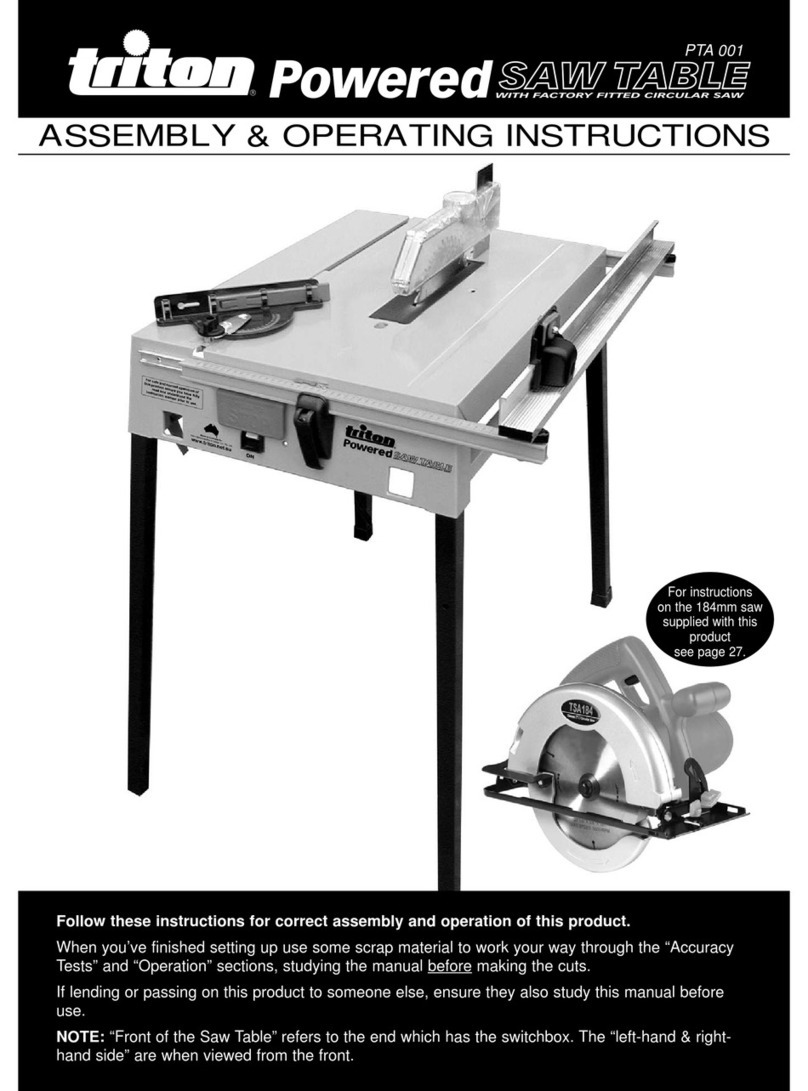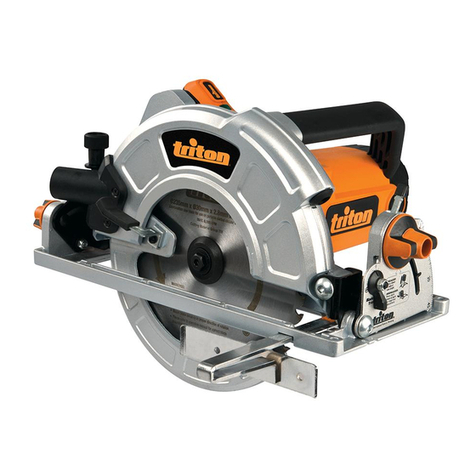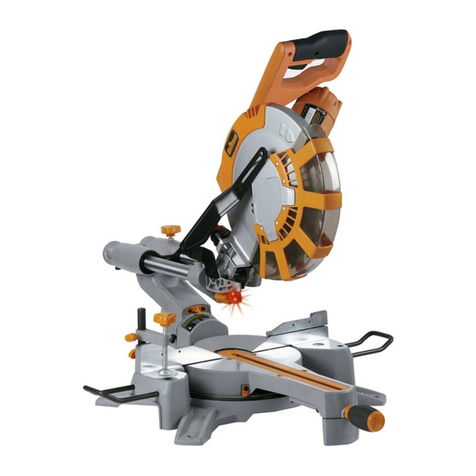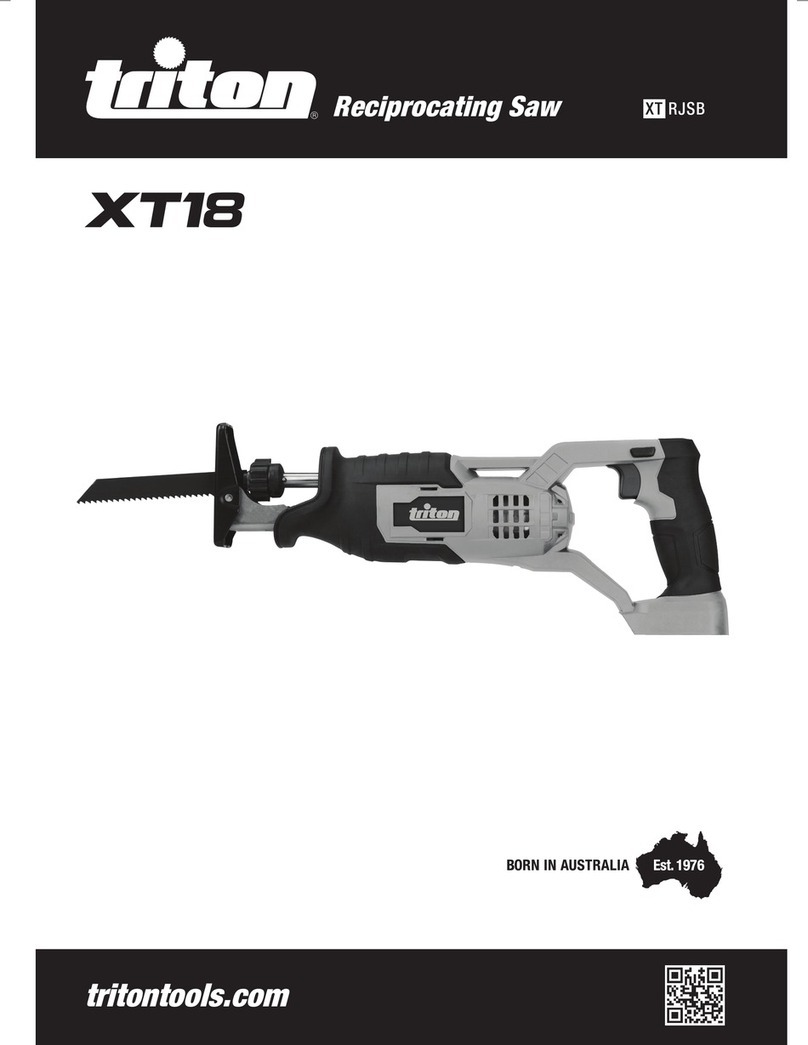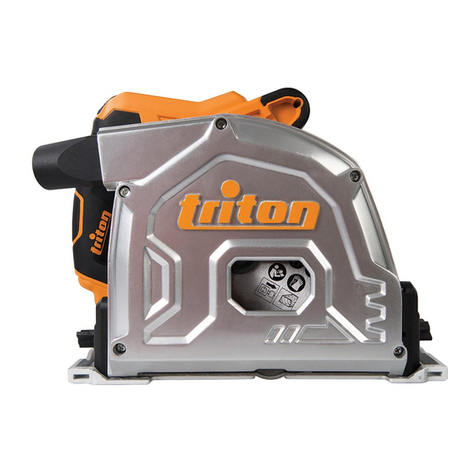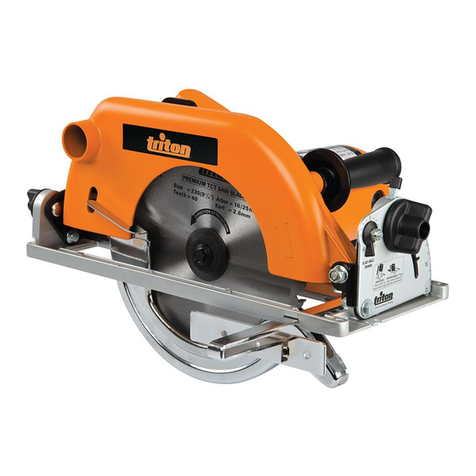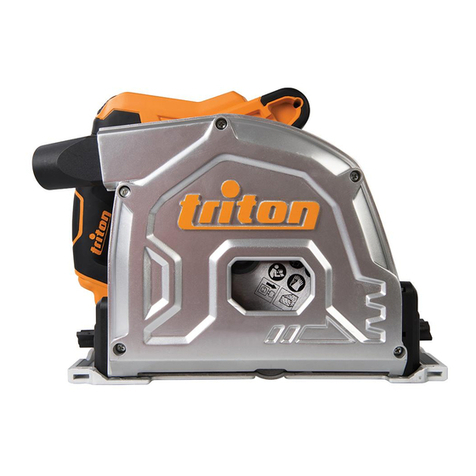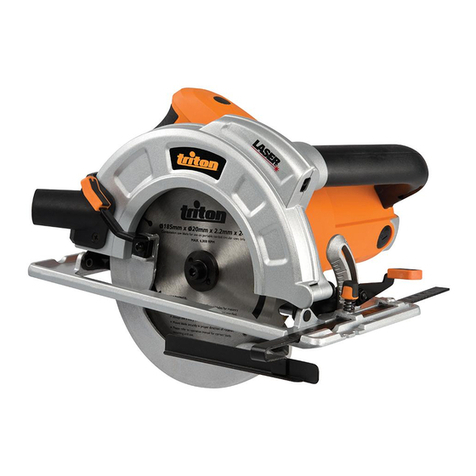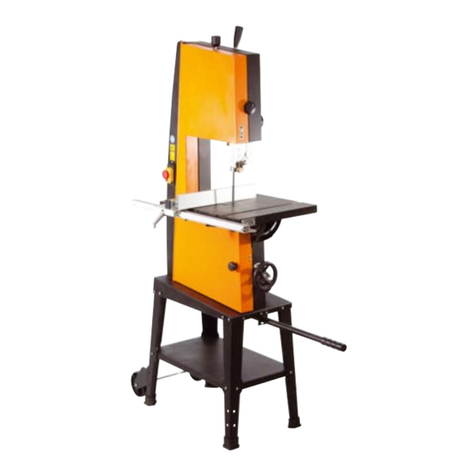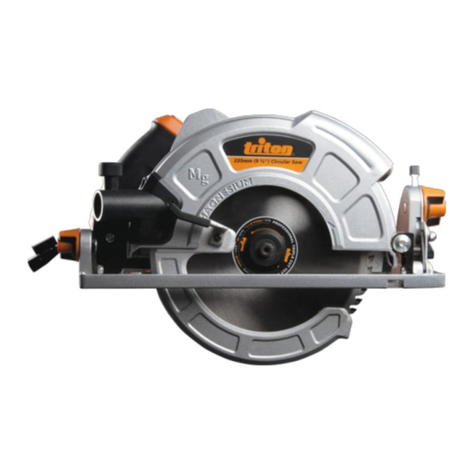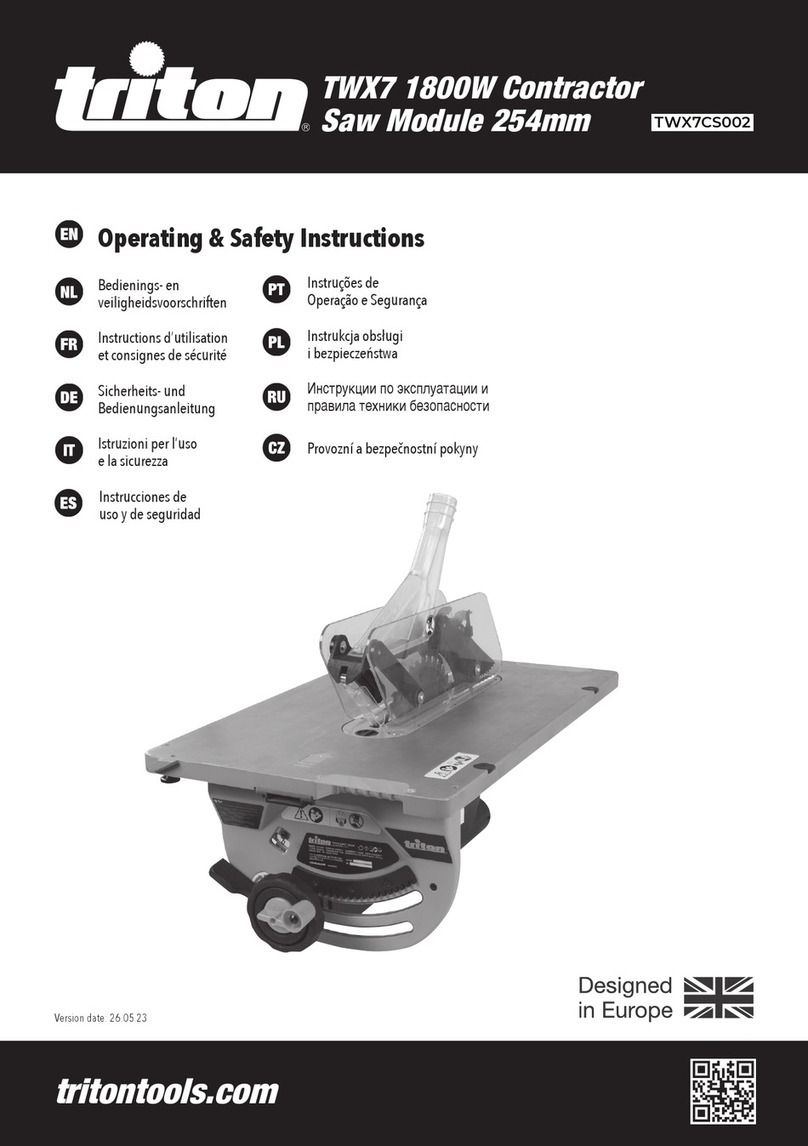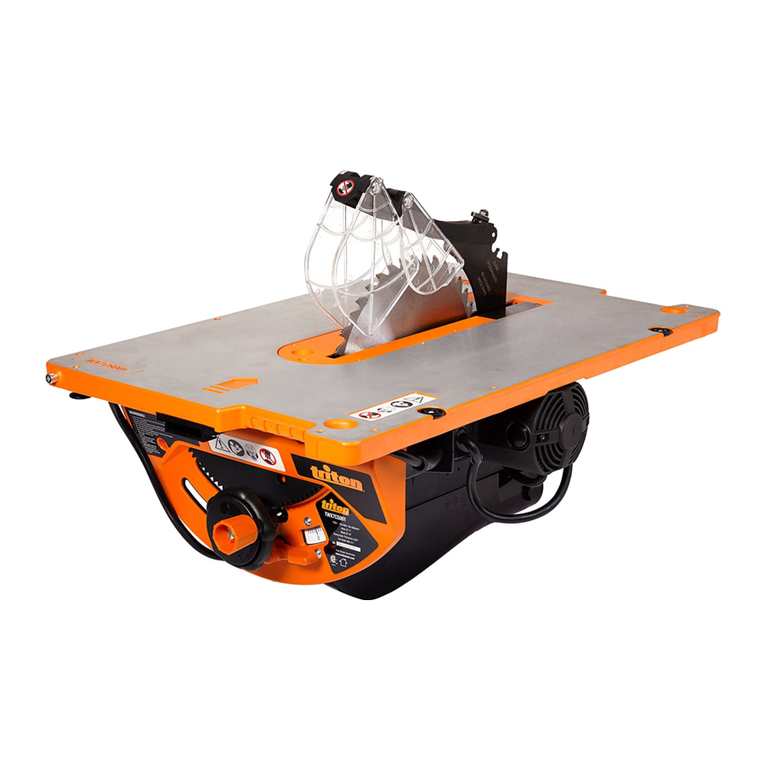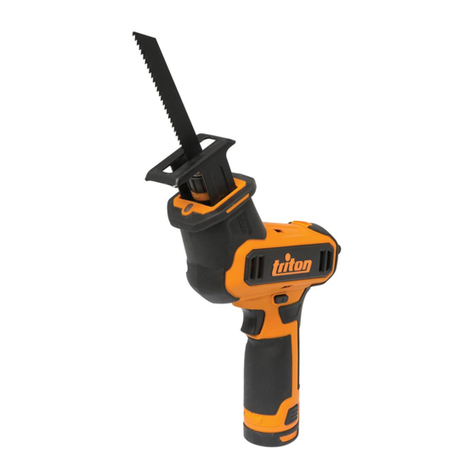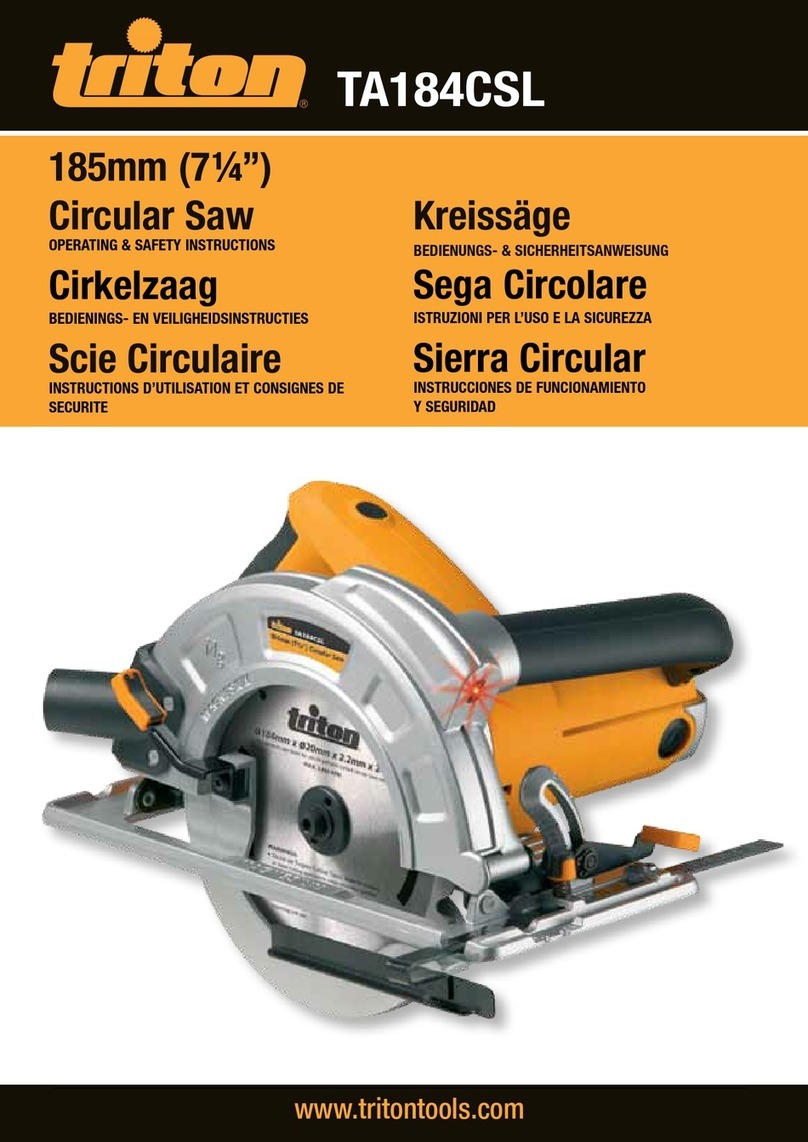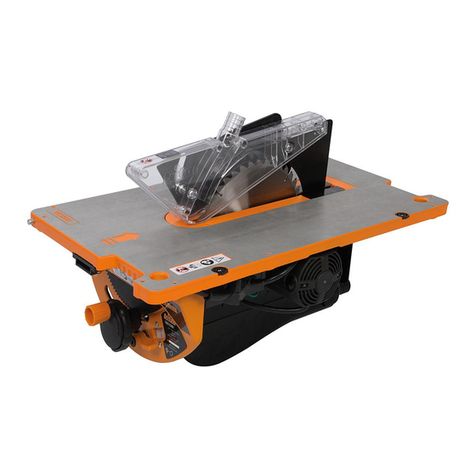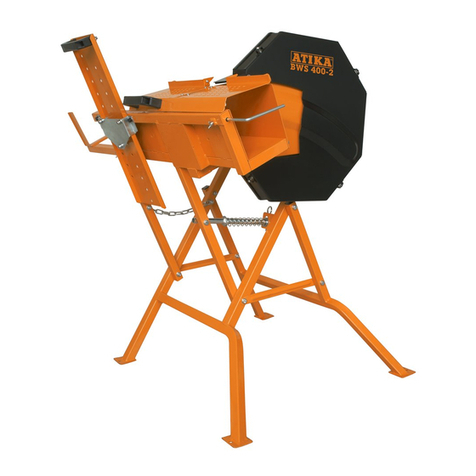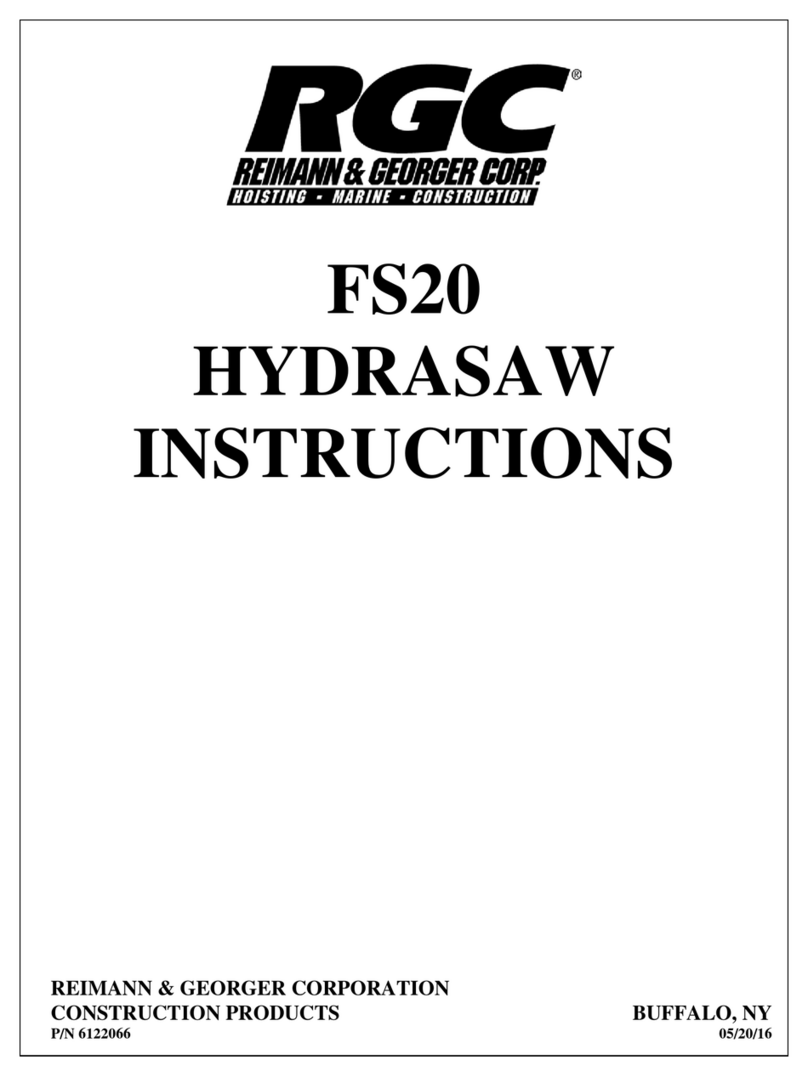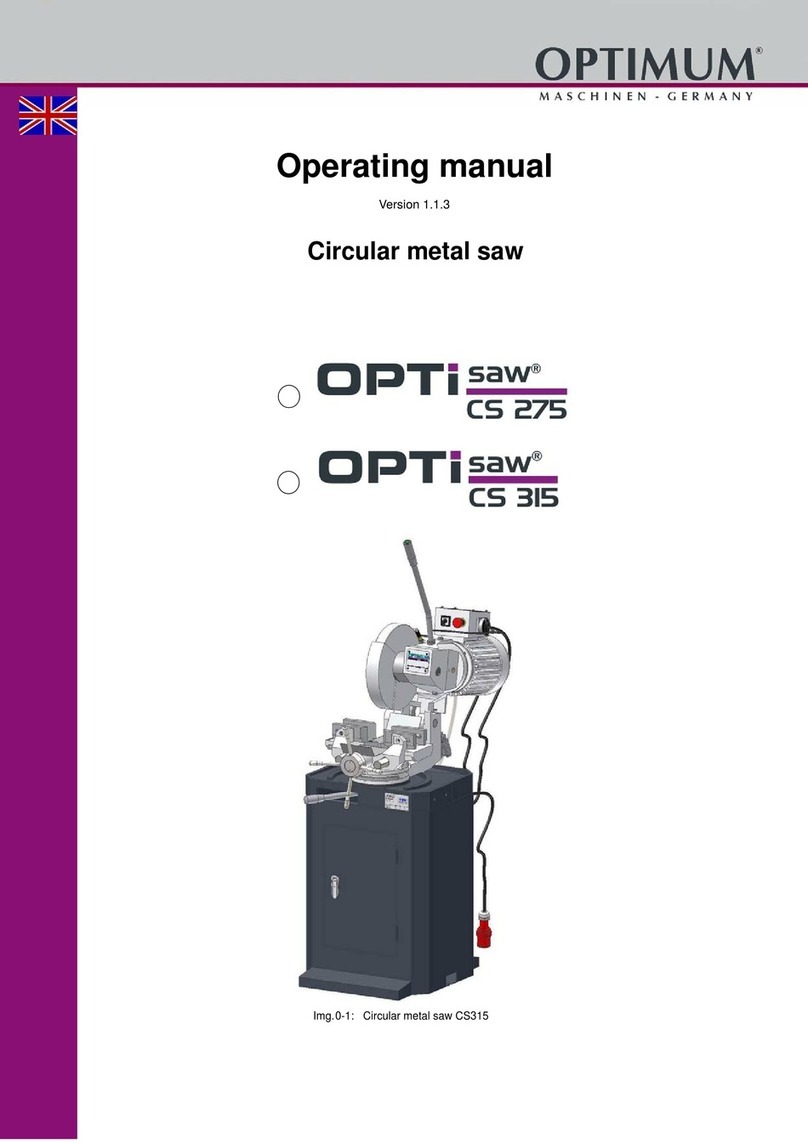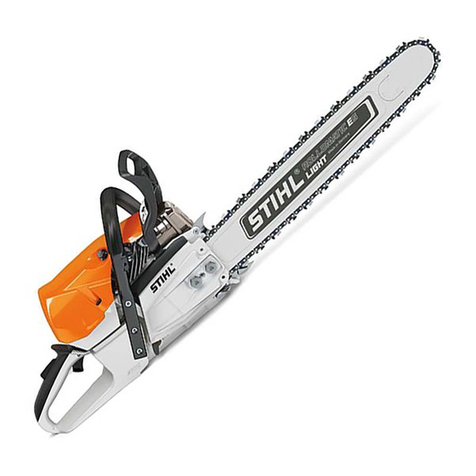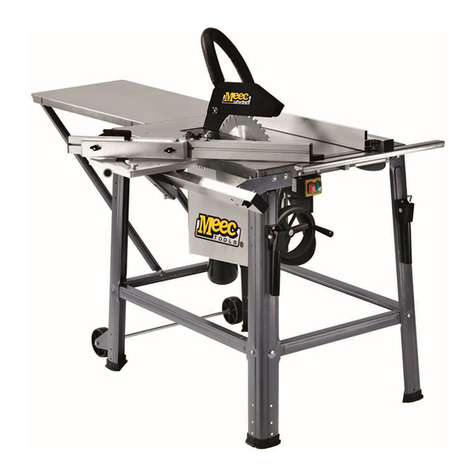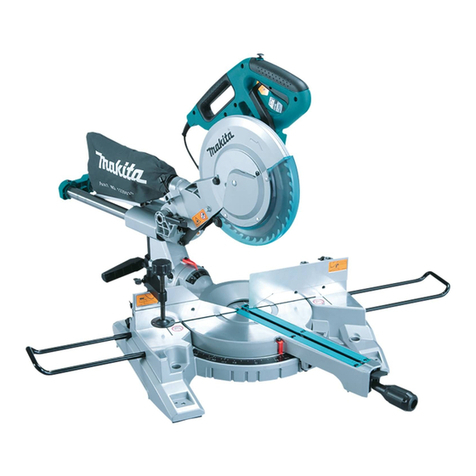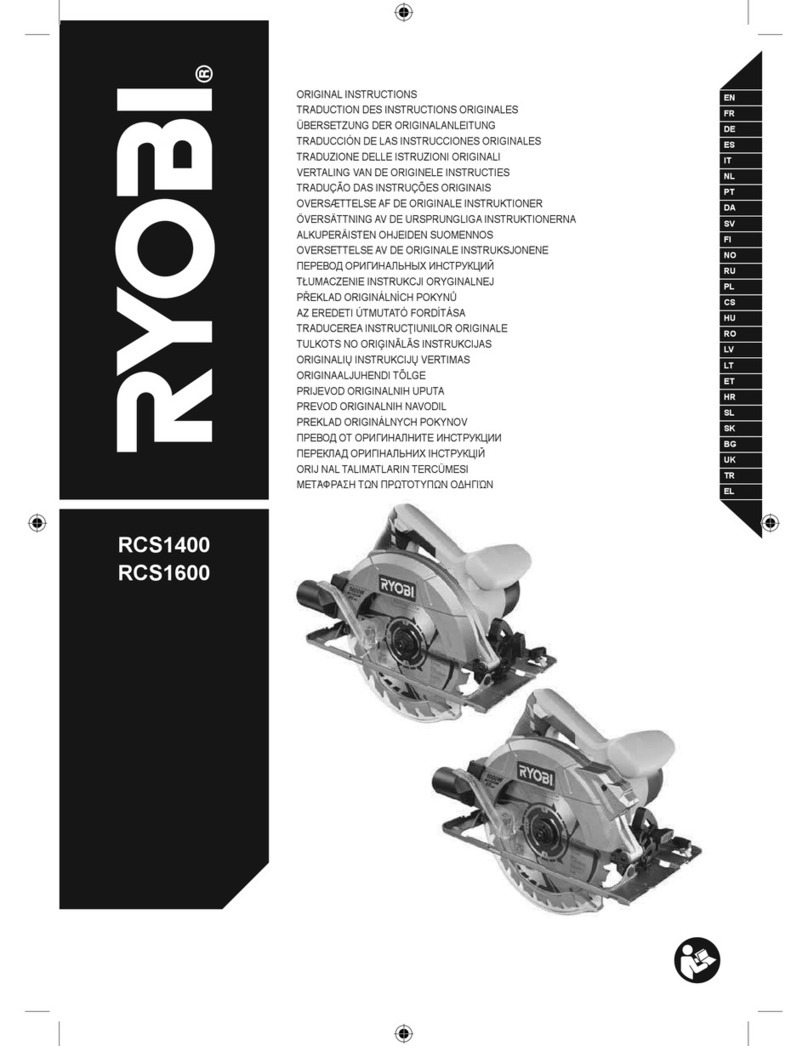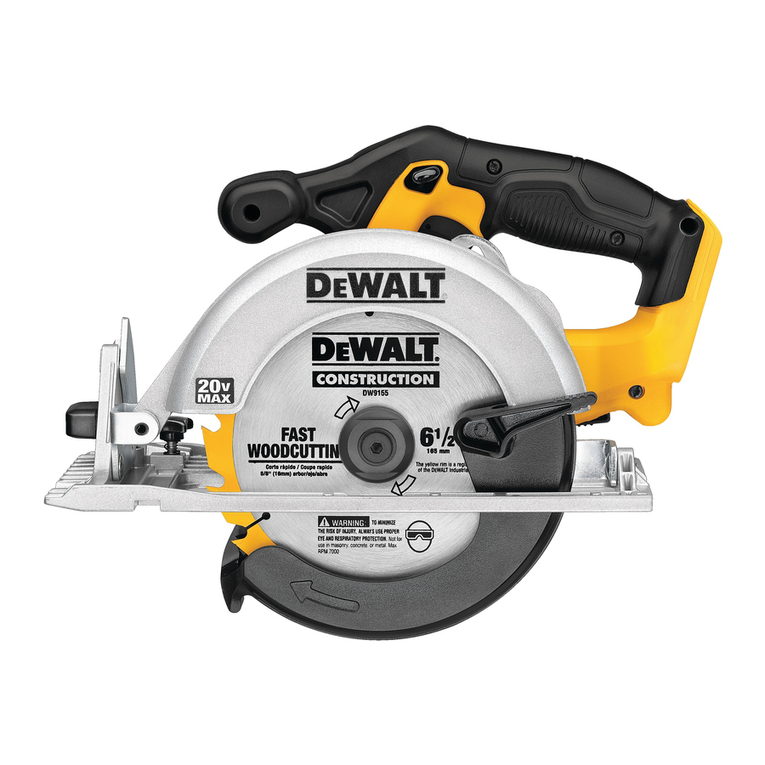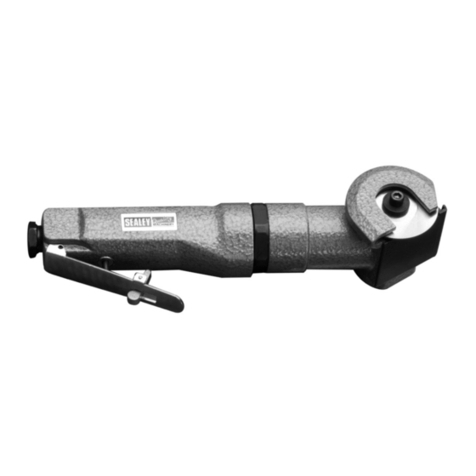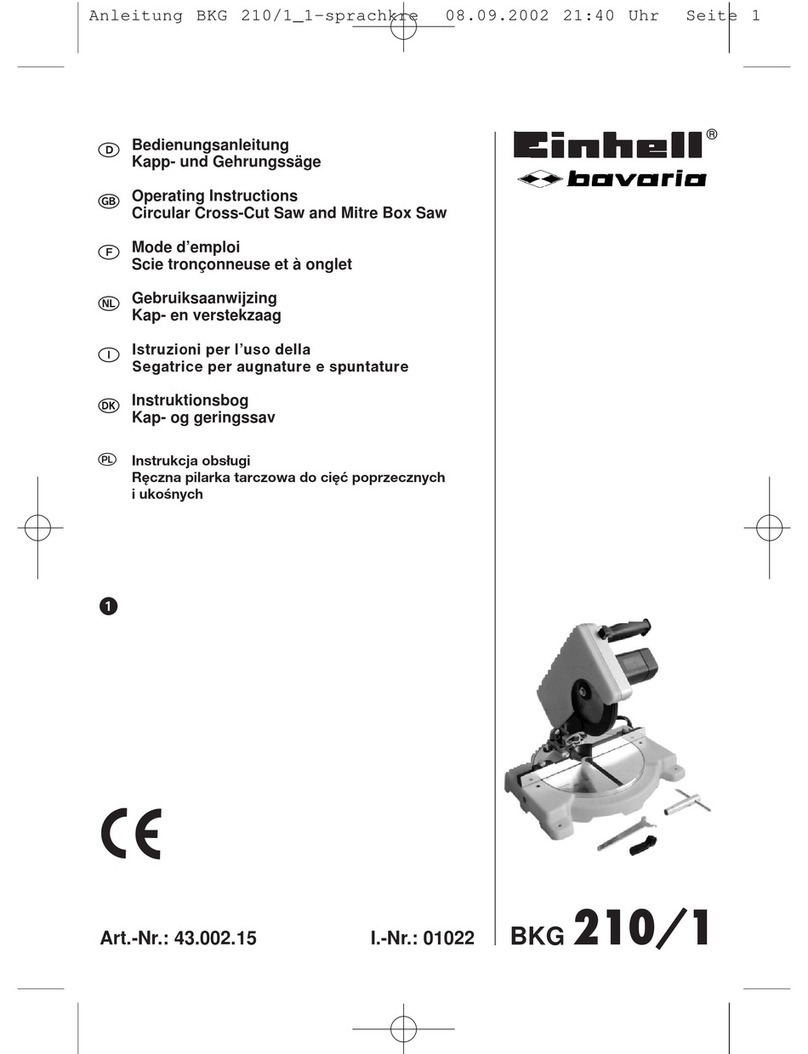
6
e) Maintain power tools. Check for misalignment or binding of moving parts, breakage
of parts and any other condition that may affect the power tool’s operation. If
damaged, have the power tool repaired before use. Many accidents are caused by
poorly maintained power tools.
f) Keep cutting tools sharp and clean. Properly maintained cutting tools with sharp cutting
edges are less likely to bind and are easier to control.
g) Use the power tool, accessories and tool bits etc. in accordance with these
instructions, taking into account the working conditions and the work to be
performed. Use of the power tool for operations different from those intended could result
in a hazardous situation.
5) Battery tool use and care
a) Recharge only with the charger specified by the manufacturer. A charger that is
suitable for one type of battery pack may create a risk of fire when used with another
battery pack.
b) Use power tools only with specifically designated battery packs. Use of any other
battery packs may create a risk of injury and fire.
c) When battery pack is not in use, keep it away from other metal objects, like paper
clips, coins, keys, nails, screws or other small metal objects that can make a
connection from one terminal to another. Shorting the battery terminals together may
cause burns or a fire.
If liquid contacts eyes, additionally seek medical help. Liquid ejected from the battery may
cause irritation or burns.
d) Under abusive conditions, liquid may be ejected from the battery; avoid contact. If
contact occurs, flush with water. If liquid contacts eyes, additionally seek medical help.
Liquid ejected from the battery may cause irritation or burns.
6) Service
a) Have your power tool serviced by a qualified repair person using only identical
replacement parts. This will ensure that the safety of the power tool is maintained.
Circular Saw Safety
Cutting procedures
a) DANGER: Keep hands away from cutting area and the blade. Keep your second
hand on auxiliary handle, or motor housing. If both hands are holding the saw, they
cannot be cut by the blade.
b) Do not reach underneath the workpiece. The guard cannot protect you from the blade
below the workpiece.
c) Adjust the cutting depth to the thickness of the workpiece. Less than a full tooth of the
blade teeth should be visible below the workpiece.
d) Never hold piece being cut in your hands or across your leg. Secure the workpiece
to a stable platform. It is important to support the work properly to minimise body
exposure, blade binding, or loss of control.
e) Hold the power tool by insulated gripping surfaces only, when performing an
operation where the cutting tool may contact hidden wiring or its own cord. Contact
with a “live” wire will also make exposed metal parts of the power tool “live” and could give
the operator an electric shock.
f) When ripping, always use a rip fence or straight edge guide. This improves the
accuracy of cut and reduces the chance of blade binding.
g) Always use blades with correct size and shape (diamond versus round) of arbour
holes. Blades that do not match the mounting hardware of the saw will run eccentrically,
causing loss of control.
h) Never use damaged or incorrect blade washers or bolts. The blade washers and bolt
were specially designed for your saw, for optimum performance and safety of operation.
Further Safety Instructions for all
Saws
Kickback causes and related warnings
• Kickback is a sudden reaction to a pinched, bound or misaligned saw blade, causing an
uncontrolled saw to lift up and out of the workpiece toward the operator;
• When the blade is pinched or bound tightly by the kerf closing down, the blade stalls and
the motor reaction drives the unit rapidly back toward the operator;
• If the blade becomes twisted or misaligned in the cut, the teeth at the back edge of the
blade can dig into the top surface of the wood causing the blade to climb out of the kerf and
jump back toward the operator.
Kickback is the result of saw misuse and/or incorrect operating procedures or
conditions and can be avoided by taking proper precautions as given below.
a) Maintain a firm grip with both hands on the saw and position your arms to resist
kickback forces. Position your body to either side of the blade, but not in line with
the blade. Kickback could cause the saw to jump backwards, but kickback forces can be
controlled by the operator if proper precautions are taken.
b) When blade is binding, or when interrupting a cut for any reason, release the trigger
and hold the saw motionless in the material until the blade comes to a complete
stop. Never attempt to remove the saw from the work or pull the saw backward while
the blade is in motion or kickback may occur. Investigate and take corrective actions to
eliminate the cause of blade binding.
c) When restarting a saw in the workpiece, centre the saw blade in the kerf and check
that saw teeth are not engaged into the material. If saw blade is binding, it may walk up
or kickback from the workpiece as the saw is restarted.
d) Support large panels to minimise the risk of blade pinching and kickback. Large
panels tend to sag under their own weight. Supports must be placed under the panel on
both sides, near the line of cut and near the edge of the panel.
e) Do not use dull or damaged blades. Unsharpened or improperly set blades produce
narrow kerf causing excessive friction, blade binding and kickback.
f) Blade depth and bevel adjusting locking levers must be tight and secure before
making cut. If blade adjustment shifts while cutting, it may cause binding and kickback.
g) Use extra caution when sawing into existing walls or other blind areas. The protruding
blade may cut objects that can cause kickback.
Lower guard function
a) Check lower guard for proper closing before each use. Do not operate the saw if
lower guard does not move freely and close instantly. Never clamp or tie the lower
guard into the open position. If saw is accidentally dropped, lower guard may be bent.
Raise the lower guard with the retracting handle and make sure it moves freely and does
not touch the blade or any other part, in all angles and depths of cut.
b) Check the operation of the lower guard spring. If the guard and the spring are not
operating properly, they must be serviced before use. Lower guard may operate
sluggishly due to damaged parts, gummy deposits, or a build-up of debris.
c) Lower guard may be retracted manually only for special cuts such as “plunge cuts”
and “compound cuts”. Raise lower guard by retracting handle and as soon as blade
enters the material, the lower guard must be released. For all other sawing, the lower guard
should operate automatically.
d) Always observe that the lower guard is covering the blade before placing saw down
on bench or floor. An unprotected, coasting blade will cause the saw to walk backwards,
cutting whatever is in its path. Be aware of the time it takes for the blade to stop after
switch is released.
Additional Circular Saw Safety
WARNING: Before connecting a tool to a power source (mains switch power point
receptacle, outlet, etc.) be sure that the voltage supply is the same as that specified on
the nameplate of the tool. A power source with a voltage greater than that specified for the
tool can result in serious injury to the user, and damage to the tool. If in doubt, do not plug
in the tool. Using a power source with a voltage less than the nameplate rating is harmful to
the motor.
a) Do not allow anyone under the age of 18 years to operate this saw
b) When operating the saw, use safety equipment including safety goggles or shield, ear
protection, dust mask and protective clothing including safety gloves
c) Hand-held power tools may produce vibration. Vibration can cause disease. Gloves may
help to maintain blood circulation in the fingers. Hand-held tools should not be used for
long periods without a break
d) Whenever possible, use a vacuum dust extraction system to control dust/waste
e) Do not attempt to cut material thicker than detailed in the Specifications section of this
manual
f) Adjust the cutting depth to the thickness of the workpiece i.e. less than a full tooth of the
blade should be visible below the workpiece
g) Ensure work is correctly supported. Large panels may sag under their own weight and bind
the saw blade. Supports must be placed under the panel on both sides, close to the line of
cut and near the edge of the panel
h) Ensure all supports and power cables are completely clear of the cutting path
i) Always secure the workpiece to a stable platform, ensuring body exposure is minimised,
avoiding blade binding, or loss of control
j) Always stand at an angle to the tool when operating
k) Be aware that the blade will project from the underside of the workpiece
l) Do not reach beneath the workpiece where the guard cannot protect you from the blade
m) Note the direction of rotation of the motor and the blade
n) Inspect the workpiece and remove all nails and other embedded objects prior to starting
work
o) Do not apply any sideways or twisting force to the blade whilst cutting
p) If a cut does not extend to the edge of the workpiece, or if the blade binds in the cut, allow
the blade to come to a complete stop and lift the saw out of the workpiece
q) Do not attempt to free a jammed blade before first disconnecting the machine from power
r) Do not move the saw backwards at any time whilst cutting
s) Beware of projected waste. In some situations, waste material may be projected at speed
from the cutting tool. It is the user’s responsibility to ensure other people in the work area
are protected from the possibility of projected waste
t) If you are interrupted when operating the saw, complete the process and switch off before
diverting your attention
u) Check the lower guard for proper closure before each use. Do not operate the saw if the
lower guard does not move freely and close instantly. Never clamp or tie the lower guard
into the open position. If the saw is accidentally dropped, the lower guard may be bent.
Raise the lower guard with the retracting handle and make sure it moves freely and does
not touch the blade or any other part, in all angles and depths of cut
v) Always observe that the lower guard is covering the blade before resting the saw on a
surface after use. An unprotected, coasting blade will cause the saw to move backwards,
286855_Z1MANPRO1.indd 6 13/07/2015 17:15
